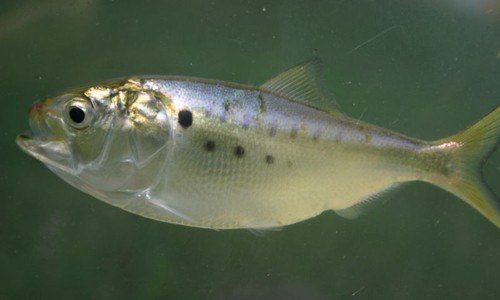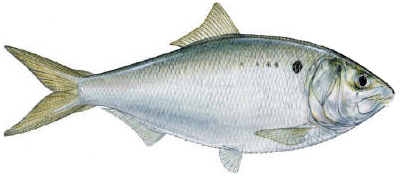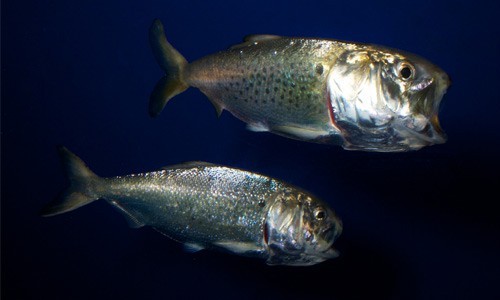Atlantic menhaden
Atlantic menhaden ( Brevoortia tyrannus )
The Atlantic menhaden or bunker ( Brevoortia tyrannus ) is a fish of the family of the herrings, which occurs at the North American Atlantic coast from Nova Scotia to Florida. Closely related species can be found to the Argentine coast.
Appearance
The body is flattened laterally with sharp gekieltem belly. The large, scaleless head accounts for almost one third of the total body length of up to 50 cm. The back is dark blue-green, sides, belly and fins are silvery with bronze luster. Behind the gill cover is a distinct black spot, a series of smaller spots follows along the edge. Abdominal and anal fins each have 18 to 24 soft rays, the caudal fin is clearly notched.
Way of life
The menhaden form large swarms, which mainly reside in shallow water and by seven the water after phyto-and zooplankton. The largest concentrations are found in the vicinity of river mouths which also serve as spawning areas. The young fish live up to a size of about 10 mm in open water.
Economic Importance
The menhaden is of great importance for the fisheries on the North American Atlantic coast and is processed mainly with fish oil, fertilizer or fish meal. He is the same time an important prey fish for larger predators. The type is not regarded as threatened, but catch limits were adopted in December 2012 in the United States to prevent overfishing.










